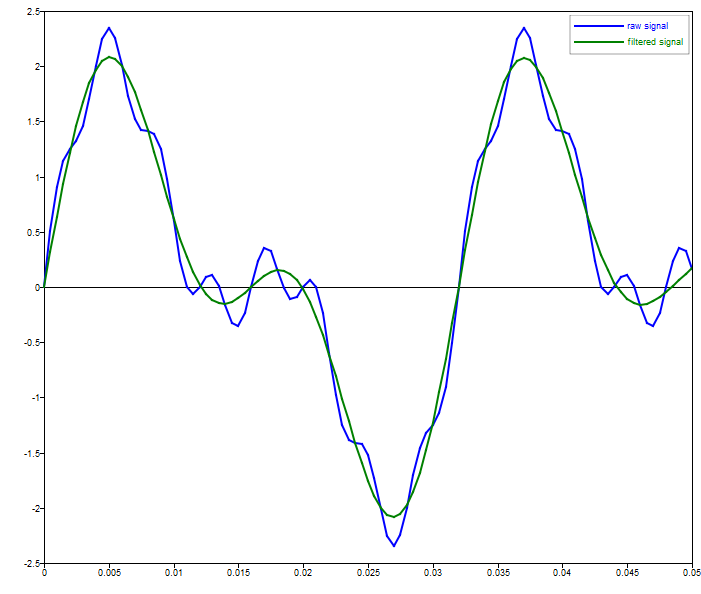filtfilt
Filter a signal forward and then backward, compensating for end effects.
Syntax
filtfilt(b,a,x)
Inputs
- b
- The numerator polynomial coefficients of the filter.
- a
- The denominator polynomial coefficients of the filter.
- x
- The signal to be filtered. If x is a matrix, then each column is filtered.
Outputs
- y
- The filtered signal.
Example
Filter a signal with a 100 Hz Butterworth filter using filtfilt.
% define signal
f1 = 62.5;
f2 = 250;
omega1 = 2*pi*f1;
omega2 = 2*pi*f2;
fs = 2000;
ts = 1/fs;
n = 100;
t = [0:ts:n*ts];
signal = sqrt(2) * sin(0.5*omega1*t) + sin(omega1*t) + 0.25 * sin(omega2*t);
% define filter
[a,b] = butter(4,100/(fs/2));
% filter signal and plot
output = filtfilt(a,b,signal);
plot(t,signal);
hold on;
plot(t,output);
legend('raw signal', 'filtered signal');
Figure 1. filtfilt figure 1
Comments
Since the signal is filtered forward and backward, the attenuation is 6dB at the cutoff frequency. To obtain a 3dB, the cutoff frequency must be adjusted. This can be done with buttord. The advantage of filtfilt is that filtering in both directions eliminates the time lag that is introduced with a single pass filter. filtfilt compensates for filtering end effects by using a reflection technique, combined with matching the initial filter conditions to the signal endpoints.
When x is a matrix, the function operates along the first dimension, which is the column dimension in the 2D case.